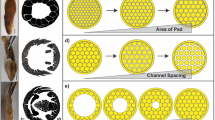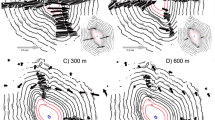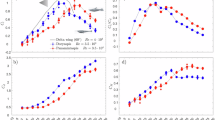Abstract
THE mantle edge in the Lamellibranchia consists, as is well known, of three lobes. Of these the one adjacent to the shell (Fig. I, I) is concerned with the secretion of this, while the bounding periostracum is secreted as a thread from the base of the groove (PG) between this and the next lobe. This middle lobe (2) has sensory functions, bearing tentacles and in certain cases, for example, Pecten and Spondylus, eyes. The innermost lobe (3) is characteristically muscular. It contains radial muscles attached to the shell along the pallial line and, between upper and lower strands of these, other muscle running longitudinally. Action of these muscles, in conjunction with distension caused by pressure of blood, is responsible for the movements of this lobe, usually known as the velum or, better, the pallial curtain. By this means the entrance of water into the mantle cavity is controlled, for example, in Ostrea1. In extreme cases, such as Pecten and Lima, it also controls the direction in which water is expelled during the swimming movements2.
This is a preview of subscription content, access via your institution
Access options
Subscribe to this journal
Receive 51 print issues and online access
$199.00 per year
only $3.90 per issue
Buy this article
- Purchase on SpringerLink
- Instant access to full article PDF
Prices may be subject to local taxes which are calculated during checkout
Similar content being viewed by others
References
Hopkins, A. E., J. Exp. Zool, 64, 469 (1933).
Yonge, C. M., Mém. Mus. Roy. Hist. Nat. Belg., (2), 3, 77 (1936).
Leyborne Popham, M., J. Mar. Biol. Assoc, 24, 549 (1940).
Yonge, C. M., Sci. Rep. Gt. Barrier Reef Exped., 1, 283 (1936).
Graham, A., Proc. Roy. Soc. Edin., 54, 158 (1934).
Yonge, C. M., Phil. Trans., B, 230, 79 (1939).
Yonge, C. M., Proc. Malacol. Soc, Lond., 22, 337 (1937).
Yonge, C. M., J. Mar. Biol. Assoc., 26, 358 (1946).
Yonge, C. M., Phil. Trans., B, 216, 221 (1928).
Author information
Authors and Affiliations
Rights and permissions
About this article
Cite this article
YONGE, C. Formation of Siphons in Lamellibranchia. Nature 161, 198–199 (1948). https://doi.org/10.1038/161198a0
Issue date:
DOI: https://doi.org/10.1038/161198a0
This article is cited by
-
Mantle margin morphogenesis in Nodipecten nodosus (Mollusca: Bivalvia): new insights into the development and the roles of bivalve pallial folds
BMC Developmental Biology (2015)
-
Functional morphology of Petricola (Rupellaria) typica (Bivalvia: Petricolidae)
Marine Biology (1974)
-
On the functional morphology of Hiatella solida (Hiatellidae: Bivalvia)
Marine Biology (1973)
-
The formation and growth of the prismatic layer ofPinctada radiata
Calcified Tissue Research (1971)
-
The Ligament in the Lamellibranchia
Nature (1953)



